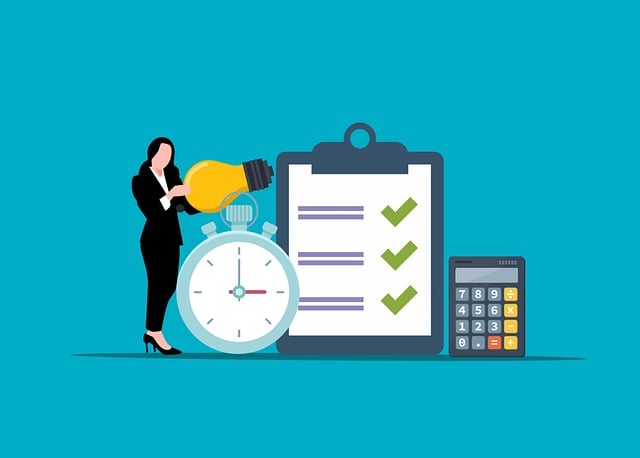Tackling student loan debt can feel like an uphill battle, especially with the rising costs of education. Many graduates step into the workforce already in deep financial waters, making it hard to get ahead or even break even. The pressure is real, both financially and emotionally. It’s not just about the money; it’s about the constant stress and worry that comes with owing such a significant amount.
Paying off student loan debt quickly can bring immense relief. It frees up your finances to pursue other goals, like buying a house, starting a family, or even saving for retirement. Plus, it minimizes the amount of interest paid over time, meaning you keep more of what you earn.
This article is a guide on how to manage and accelerate the repayment of student loans. We’ll explore practical strategies that can help you make a dent in your debt faster, from simple budgeting tips to more aggressive repayment techniques. Whether you owe $20K or $80K, there’s a path forward. Here’s a sneak peek of the strategies we’ll dive into:
– Making extra payments and maximizing your cash flow
– Choosing between the debt avalanche and debt snowball methods
– Refinancing and consolidating your loans
– Tapping into employer repayment assistance programs
– Budgeting and finding side hustles
By the end, you’ll have a clearer picture of how to take control of your student loan debt and start moving towards financial freedom.
Guess what? When you click and buy through our links, you’re doing more than improving your game. You’re supporting us in a way that doesn’t cost you extra but helps us keep bringing you the best drills and tips. It’s a slam dunk for both of us!”
Contents
The Fastest Ways to Pay Off Student Loan Debt
Speed is crucial when paying off student loans because the longer you take, the more interest you rack up. Here are some top methods to help you pay off your debt as quickly as possible.
Making extra payments can significantly cut down your principal balance and the interest you owe. Start by identifying where you can find extra funds. This might mean cutting out non-essential expenses, such as dining out or subscription services. Any extra cash you find should go straight towards your loans.
Another effective approach is choosing between the debt avalanche and debt snowball methods. The debt avalanche method focuses on paying off loans with the highest interest rates first. While it’s more cost-effective long-term, it requires patience. The debt snowball method, on the other hand, pays off the smallest loans first, providing quick wins and motivation. Both methods work, so pick the one that fits your needs best.
Refinancing and consolidation are also worth considering. Refinancing can lower your interest rate if you have good credit, which means more of your payment goes towards the principal. Consolidation simplifies multiple loans into one, often with a lower monthly payment, though it might extend your repayment period.
Real-life success stories can be incredibly motivating. Find and read about those who’ve successfully paid off their loans quickly. Their strategies can provide inspiration and practical tips you might not have considered.
Effective Strategies to Repay Student Loan Debt
Creating and sticking to a realistic budget is one of the most important steps in tackling student loan debt. Start by listing all sources of income and all expenses, then look for areas where you can cut back. It’s amazing how small savings can add up over time. Automate your payments if possible, so you don’t have to think about setting aside money each month—it’s done for you.
Employer repayment assistance programs are becoming more common, and they can be a huge help. Some companies offer to match your student loan payments up to a certain amount. Check with your HR department to see if your employer provides this benefit. If they don’t, it could even be a point of negotiation when taking a new job.

Tax deductions and credits can also ease your burden. The interest on student loans may be tax-deductible, which can lower your taxable income and boost your refund. Be sure to speak with a tax professional to understand exactly what you’re eligible for and how to claim it correctly.
Income-driven repayment plans are designed to make your monthly payments more manageable if you’re struggling with high debt and a low income. These plans cap your monthly payments based on a percentage of your discretionary income and extend your repayment term. They can be a lifesaver in the short-term, but extending your loan term means paying more in interest over time. Weigh the pros and cons carefully.
When combined, these strategies can make a big difference in how quickly and efficiently you pay off your student loans. Integrate them into your financial plan and stay committed to your goal of becoming debt-free.
How to Pay Off $80K in Student Loans: Step-by-Step Guide
Breaking down a large debt like $80,000 can seem intimidating, but breaking it into smaller, manageable chunks makes the task more feasible. Start by setting mini-goals for paying off certain amounts within specific timeframes. Celebrate these small victories to keep yourself motivated.
Finding additional sources of income can expedite your repayment efforts significantly. This might mean taking on a part-time job, freelancing, or finding side gigs. The extra income can go directly towards your loans, accelerating your progress.

Negotiating better interest rates and terms with your lender may also provide some relief. Refinancing your loans for a lower interest rate can reduce the total amount you owe over time. Don’t hesitate to shop around at different financial institutions to find the best deal. Some lenders even offer rate reductions for signing up for automatic payments.
Developing a long-term repayment strategy is crucial. This involves combining the steps mentioned above into a cohesive plan that aligns with your financial goals. It may also include prioritizing which loans to pay off first using methods like the debt avalanche or debt snowball. Remain flexible and adjust your strategy as needed based on your financial situation.
Choosing the Most Effective Strategy for Your Situation
Assessing your financial goals and current situation is the cornerstone of selecting the right repayment strategy. Understand your income, monthly expenses, and other financial commitments. This assessment will guide you in choosing the best approach to managing your student loans.
Understanding the pros and cons of different repayment methods is essential. The debt avalanche method saves money on interest in the long run but requires patience. The debt snowball method offers quick wins, boosting motivation but might cost more in interest. Balancing these trade-offs is key to finding a plan that you can stick with.
Tailoring a repayment plan to your unique needs ensures that you choose strategies that work best for you. For example, if you have a stable job with a predictable income, automatic extra payments might be ideal. If your income fluctuates, income-driven repayment plans could offer more flexibility.
Maintaining motivation and staying on track can be challenging, especially with long-term debt. Set visual reminders of your progress, join support groups, or use apps to track your payments. Celebrate your milestones – no matter how small – to keep your spirits high.
In summary, the journey to paying off student loans faster involves a mix of strategies tailored to your unique situation. By assessing your finances, understanding the various methods, and adapting them to fit your needs, you can confidently move toward financial freedom.


I appreciate the comprehensive guide on paying off student loan debt. The strategies you’ve outlined, such as making extra payments, refinancing, and budgeting, are all effective ways to accelerate the process. I’m particularly interested in the idea of using a side hustle to generate extra income. Do you have any specific recommendations for finding side gigs that are flexible and can be easily integrated into a busy schedule?
Affiliate marketing stands out as one of the most efficient side hustles for busy professionals managing a full-time job. Here’s the key advantage: unlike conventional part-time roles that demand fixed hours and physical presence, affiliate marketing allows you to operate on your own terms. You can develop income streams without the need to clock in extra hours at a specific location. Whether it’s during your downtime or on weekends, you can create content, oversee your website, and fine-tune your strategies, making meaningful progress even with a packed schedule.
Moreover, the allure of passive income in affiliate marketing is hard to resist. Once your content is established, it continues to generate revenue while you concentrate on your main job. With just a few hours dedicated each week, you can gradually expand your efforts, and as your audience and traffic increase, so will your earnings. This approach offers a scalable and flexible way to cultivate a business that fits seamlessly into your life.
Picture a side hustle that adapts to your lifestyle rather than dictating it. With affiliate marketing, you’re not just working; you’re building a sustainable income stream with the freedom to decide when and how much you engage.
If you’re eager to embark on this journey and start your affiliate business, consider exploring Wealthy Affiliate. This comprehensive platform provides the training, tools, and support necessary for success, regardless of your experience level. Take the plunge and discover how affiliate marketing can transform your financial future!
Here are some profitable, low-cost side hustles:
Freelance Writing: $20–$100+ per article.
Virtual Assistant: $15–$50 per hour handling admin tasks.
Social Media Management: $300–$1,000 per client monthly.
Proofreading/Editing: $20–$60 per hour for content polishing.
Reselling Thrifted Items: High margins on platforms like eBay.
Pet Sitting/Dog Walking: $15–$30 per walk or visit.
Online Tutoring: $20–$80 per hour teaching subjects or skills.
Affiliate Marketing: Earn commissions in niches like personal finance.
Graphic Design: Create designs or templates, sell on Etsy.
These are affordable to start and can grow with time and effort. Which one interests you most?